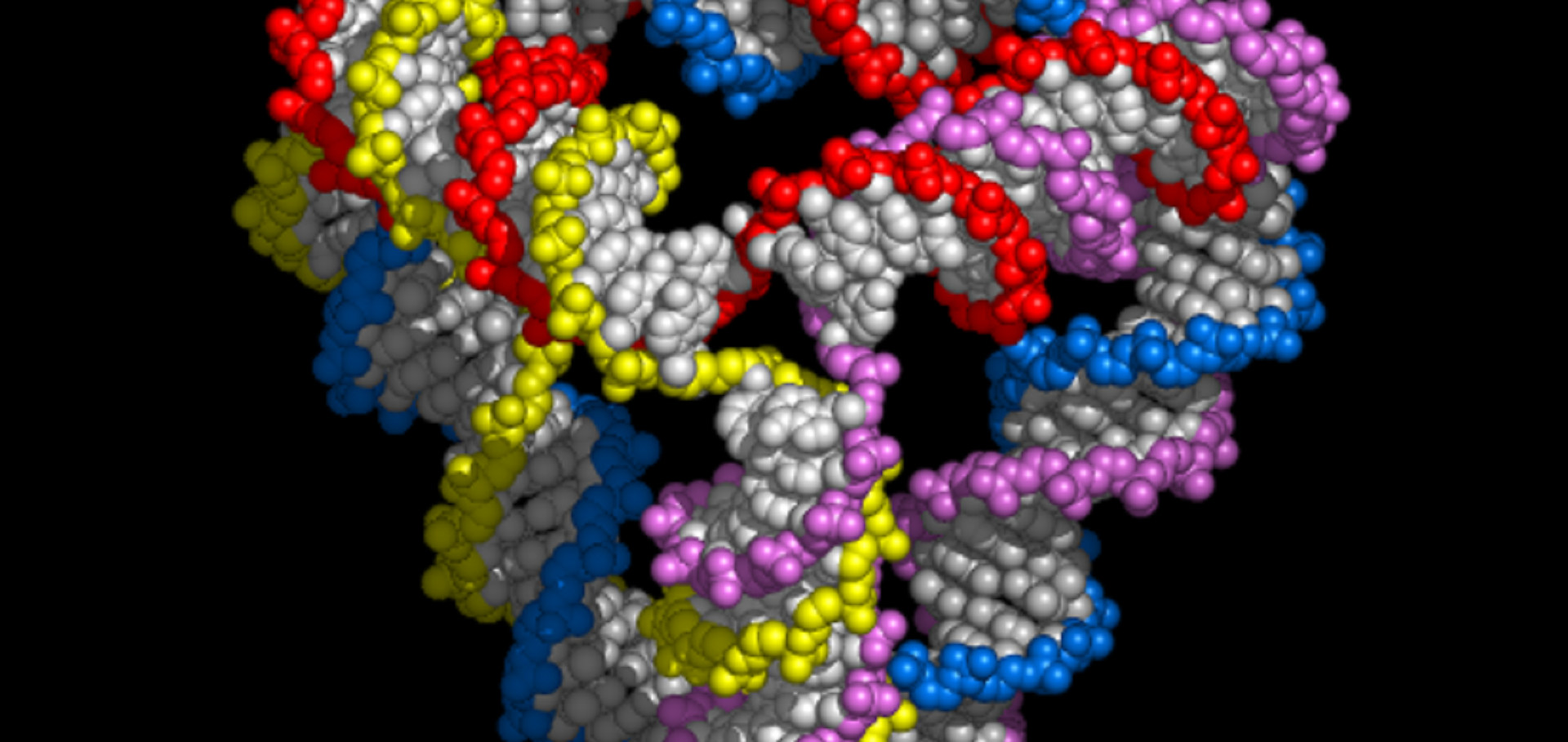DNA origami signposts for identifying proteins on cell membranes by electron cryotomography
Cell Cell Press 184:4 (2021) 1110-1121.e16
Abstract:
Electron cryotomography (cryoET), an electron cryomicroscopy (cryoEM) modality, has changed our understanding of biological function by revealing the native molecular details of membranes, viruses, and cells. However, identification of individual molecules within tomograms from cryoET is challenging because of sample crowding and low signal-to-noise ratios. Here, we present a tagging strategy for cryoET that precisely identifies individual protein complexes in tomograms without relying on metal clusters. Our method makes use of DNA origami to produce “molecular signposts” that target molecules of interest, here via fluorescent fusion proteins, providing a platform generally applicable to biological surfaces. We demonstrate the specificity of signpost origami tags (SPOTs) in vitro as well as their suitability for cryoET of membrane vesicles, enveloped viruses, and the exterior of intact mammalian cells.Strategies for constructing and operating DNA origami linear actuators
Small Wiley 17:20 (2021) 2007704
Abstract:
Linear actuators are ubiquitous components at all scales of engineering. DNA nanotechnology offers a unique opportunity for bottom-up assembly at the molecular scale, providing nanoscale precision with multiple methods for constructing and operating devices. In this paper, DNA origami linear actuators with up to 200 nm travel, based on a rail threading a topologically locked slider, are demonstrated. Two strategies, one- and two-pot assembly, are demonstrated whereby the two components are folded from one or two DNA scaffold strands, respectively. In order to control the position of the slider on the rail, the rail and the inside of the slider are decorated with single-stranded oligonucleotides with distinct sequences. Two positioning strategies, based on diffusion and capture of signaling strands, are used to link the slider reversibly to determined positions on the rail with high yield and precision. These machine components provide a basis for applications in molecular machinery and nanoscale manufacture including programmed chemical synthesis.Design of hidden thermodynamic driving for non-equilibrium systems via mismatch elimination during DNA strand displacement
Nature Communications Springer Nature 11 (2020) 2562
Abstract:
Recent years have seen great advances in the development of synthetic self-assembling molecular systems. Designing out-of-equilibrium architectures, however, requires a more subtle control over the thermodynamics and kinetics of reactions. We propose a mechanism for enhancing the thermodynamic drive of DNA strand-displacement reactions whilst barely perturbing forward reaction rates: the introduction of mismatches within the initial duplex. Through a combination of experiment and simulation, we demonstrate that displacement rates are strongly sensitive to mismatch location and can be tuned by rational design. By placing mismatches away from duplex ends, the thermodynamic drive for a strand-displacement reaction can be varied without significantly affecting the forward reaction rate. This hidden thermodynamic driving motif is ideal for the engineering of non-equilibrium systems that rely on catalytic control and must be robust to leak reactions.Reconfigurable T‐junction DNA origami
Angewandte Chemie Wiley (2020) ange.202006281
Controlling the bioreceptor spatial distribution at the nanoscale for single molecule counting in microwell arrays
ACS Sensors American Chemical Society 4:9 (2019) 2327-2335


